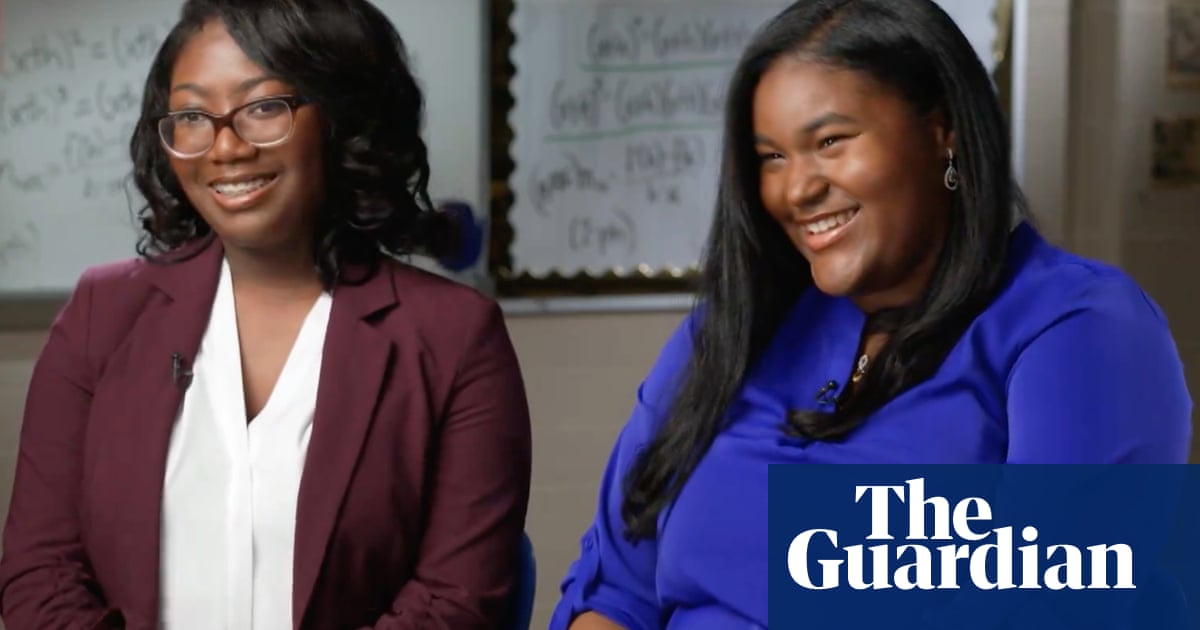Two college freshmen who, during their final year of high school, found a new way to prove Pythagorasâs theorem by using trigonometry â which mathematicians for generations thought was impossible â have since uncovered multiple more such proofs, they revealed in a national interview on Sunday.
âWe found five, and then we found a general format that could potentially produce at least five additional proofs,â Calcea Johnson said on CBSâs 60 Minutes, a little more than a year after she and NeâKiya Jackson collaborated on an accomplishment that earned them international recognition.
Nonetheless, in comments that stunned their interviewer, Bill Whitaker, the two graduates of St Maryâs Academy in New Orleans denied seeing themselves as math geniuses and dismissed any interest in pursuing careers in mathematics.
âPeople might expect too much out of me if I become a mathematician,â Jackson said, shaking her head. Johnson, for her part, added: âI may take up a minor in math, but I donât want that to be my job job.â
Sundayâs conversation on CBSâs popular Sunday evening news magazine were perhaps their most extensive, widely broadcast remarks to date on the new ground that they broke with respect to the Pythagorean theorem.
The 2,000-year-old theorem established that the sum of the squares of a right triangleâs two shorter sides equals the square of the hypotenuse â the third, longest side opposite the shapeâs right angle. Countless schoolchildren taking geometry have memorized the notation summarizing the theorem: a2 + b2 = c2.
For 2,000 years, mathematicians maintained that any alleged proof of the Pythagorean theorem that was based in trigonometry would constitute a logical fallacy known as circular reason â in essence, trying to validate an idea with the idea itself.
But the bonus question on a math contest that Johnson and Jackson took home to complete during the Christmas break of their final year at St Maryâs served as the impetus for them to plot out a new way to demonstrate that one could indeed use trigonometry to prove Pythagorasâs theorem.
Their work was so compelling that the pair went to a regional meeting of the American Mathematical Society in Atlanta in March 2023 to outline their findings. At the organizationâs recommendation, Jackson and Johnson have submitted their discoveries for final peer review and publication â as well as working on additional proofs while that process is pending, as 60 Minutes noted.
The 60 Minutes interview gave Johnson and Jackson occasion to reflect on the intense reaction caused by initial media reports on their innovative work at St Maryâs, a Catholic high school that has been dedicated to educating Black girls since its founding shortly after the US civil war.
Some of it was negative. Some in the math community smarted at claims in a press release issued by St Maryâs that asserted Jackson and Johnsonâs research was âunprecedentedâ. And they flocked to social media demanding that a 2009 trigonometry-based proof for Pythagorasâs theorem get its due.
Yet a lot of the reaction to Johnson and Jackson was positive, especially as mathematicians who picked apart their work confirmed that â by all indications â they had arrived at a valid new proof, a celebration-worthy accomplishment.
Michelle Obama wrote a post on social media that linked to a story about Johnson and Jackson, adding the text: âI just love this story. ⦠Way to go, NeâKiya and Calcea! Iâm rooting for you and canât wait to see what you all do next.â
They also received a commendation from Louisianaâs then governor as well as symbolic keys to the city of New Orleans.
Asked on 60 Minutes why they thought people were so impressed with what they had done, Jackson said she thought the public was surprised young Black women could author such a feat.
âIâd like to be celebrated for what it is,â Jackson said. âLike â itâs a great mathematical achievement.â
Jackson is now attending New Orleansâ Xavier University and enrolled in its pharmacy department. Meanwhile, Johnson â who graduated from St Maryâs as its valedictorian â is now an environmental engineering student at Louisiana State University in Baton Rouge.



